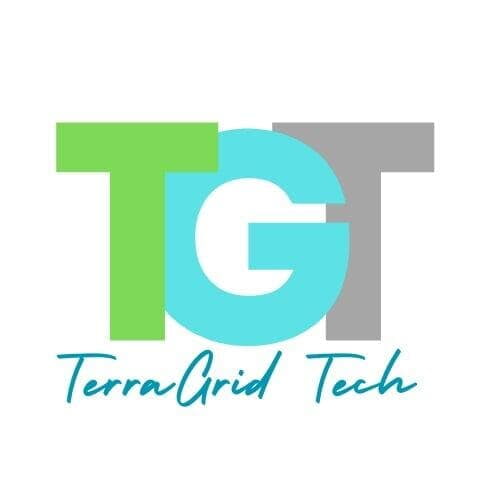How TGT is Helping the Environment
How TGT is Helping the Environment
The shift from paper to digital receipts is more than just a convenience—it’s a commitment to a sustainable future. With TGT, businesses can eliminate paper waste, helping to save trees, conserve water, and lower the energy used in paper production. This transition also reduces carbon emissions and eliminates harmful chemicals like BPA and BPS found in thermal paper, protecting both human health and the environment. By embracing digital receipts, TGT supports global efforts to combat climate change while conserving essential resources like water and energy.
Comprehensive Questions and Answers: Environmental Impact of Paper Receipts and Benefits of TGT Technology
General Environmental Questions
1. Why are paper receipts bad for the environment?
Answer:
Paper receipts have a significant negative impact on the environment due to:
- Deforestation: Millions of trees are cut down annually to produce paper.
- Water Usage: The production of paper receipts consumes enormous amounts of water—about 10 liters per A4 sheet.
- Energy Consumption: Manufacturing, printing, and transporting paper receipts require substantial energy, contributing to greenhouse gas emissions.
- Chemical Pollution: Thermal paper receipts often contain toxic chemicals like BPA and BPS, which can contaminate soil and water and pose health risks.
- Waste: Most receipts are not recyclable and end up in landfills, producing methane gas as they decompose.
2. How do paper receipts contribute to climate change?
Answer:
Paper receipts contribute to climate change by:
- Deforestation: Cutting down trees reduces the Earth's ability to absorb carbon dioxide.
- High Carbon Emissions: Producing, transporting, and disposing of receipts emits significant greenhouse gases.
- Methane from Landfills: Disposed receipts in landfills release methane, a greenhouse gas much more potent than CO2.
3. Are paper receipts recyclable?
Answer:
Most paper receipts are not recyclable because they are made from thermal paper, which is coated with chemicals like BPA and BPS. Recycling such paper can contaminate the recycling stream.
4. What percentage of paper receipts end up in landfills?
Answer:
Around 90% of paper receipts end up in landfills, contributing to environmental waste and methane emissions during decomposition.
5. How many trees are cut down each year for paper receipts?
Answer:
Approximately 10 million trees are cut down annually to produce paper receipts worldwide.
Benefits of TGT Technology
6. How does TGT technology address the environmental impact of paper receipts?
Answer:
TGT technology eliminates the need for paper receipts by providing digital receipts. This reduces:
- Deforestation: No trees are needed to produce receipts.
- Water Waste: Digital receipts use no water, unlike paper production.
- Energy Use: Reduces energy spent on manufacturing, printing, and transportation of paper.
- Pollution: Eliminates harmful chemicals associated with thermal paper.
- Waste Generation: Digital receipts reduce solid waste, minimizing landfill contributions.
7. What are the water-saving benefits of using TGT?
Answer:
Switching to TGT saves billions of liters of water annually, as no water is used in generating digital receipts, unlike the water-intensive paper manufacturing process.
8. Can TGT help businesses reduce costs while being eco-friendly?
Answer:
Yes! TGT helps businesses:
- Save up to 75% on receipt costs, as digital receipts are significantly cheaper than paper.
- Enhance their eco-friendly image, attracting environmentally conscious customers.
- Eliminate costs related to paper procurement, printing, and storage.
9. What are the sustainability benefits of TGT for businesses?
Answer:
- Environmental Stewardship: Businesses contribute to reducing deforestation and waste.
- Regulatory Compliance: Many governments encourage or mandate sustainable practices.
- Customer Loyalty: Eco-conscious customers prefer businesses that adopt green solutions.
Long-term Benefits for the Planet
10. How does TGT contribute to preserving natural resources?
Answer:
- Trees Saved: Digital receipts reduce deforestation, preserving forests that absorb carbon dioxide and support biodiversity.
- Water Conservation: Eliminating paper reduces the water footprint of businesses.
- Energy Efficiency: Reduces global energy consumption tied to the production and transport of paper.
11. How does TGT align with global sustainability goals?
Answer:
TGT supports the UN Sustainable Development Goals (SDGs) by:
- Reducing environmental degradation.
- Encouraging responsible consumption and production (SDG 12).
- Contributing to climate action (SDG 13).
- Promoting sustainable industry practices (SDG 9).
12. What indirect benefits does TGT provide to the environment?
Answer:
- Reduced Landfill Overload: Less paper waste reduces the burden on landfills.
- Healthier Ecosystems: Fewer chemicals in receipts mean reduced soil and water contamination.
- Energy Savings in Waste Management: Digital receipts reduce the need for waste processing.
Consumer Perspective
13. How can individuals benefit from using TGT?
Answer:
- Convenience: All receipts are stored digitally, eliminating paper clutter.
- Eco-Consciousness: Users contribute to environmental conservation.
- Simplified Records: Easier access to past receipts for returns, exchanges, or warranties.
14. Does using TGT affect the experience of non-tech-savvy users?
Answer:
Not at all! The TGT app is user-friendly, and businesses can assist users in downloading and setting up the app for quick access to digital receipts.
15. How can individuals amplify the impact of TGT?
Answer:
- Encourage friends and family to switch to digital receipts.
- Choose businesses that prioritize sustainability.
- Advocate for policies that support paperless solutions.
Global Implications
16. What would happen if all businesses adopted TGT globally?
Answer:
- Billions of Trees Saved: Significant reduction in deforestation.
- Trillions of Liters of Water Conserved: Reduced strain on water resources.
- Lower Carbon Emissions: Massive reduction in the environmental footprint of paper production.
- Healthier Planet: Cleaner air, water, and ecosystems for future generations.
17. How does TGT contribute to combating climate change?
Answer:
- Carbon Sequestration: Saves trees that absorb CO2.
- Reduced Methane Emissions: Less paper waste in landfills means lower methane output.
- Energy Efficiency: Eliminates energy-intensive processes associated with paper receipts.
18. What role can businesses play in promoting TGT?
Answer:
- Adopt TGT Technology: Integrate digital receipts into their systems.
- Educate Customers: Inform customers about the environmental benefits of digital receipts.
- Lead by Example: Set a precedent for other businesses to follow eco-friendly practices.








